An experiment that has been going on for more than half a century could hold a solution to a nagging concern of feeding an ever-increasing population with shrinking resources.

You wouldn’t know it by simply looking at it, but a one-hectare rice field at the International Rice Research Institute (IRRI) in the Philippines has been in perpetual motion since 1962.
The Long-Term Continuous Cropping Experiment (LTCCE) recently marked its 150th rice cropping season, making it one of the longest-running agricultural experiments in the world, and the most exciting. The LTCCE, however, wasn’t conceived to make it into the Guinness Book of World Records. It measures trends in yield and soil properties over its lifetime as indicators of the sustainability of continuous rice cropping on flooded soil. The data being collected from the LTCCE might not directly resonate with the public, but this experiment could actually answer perhaps the most important question of our time: how shall we produce enough rice for a growing population in a sustainable way?
The ghost of Malthus
In An Essay on the Principle of Population (1798), Thomas Malthus predicted that an outbreak of famine and diseases was inevitable and it was only a matter of time. About 150 years later, the world found itself teetering dangerously on the brink of a global famine as food production lagged behind population growth. But, a timely intervention between the 1940s and the late 1960s, known as the Green Revolution, increased agricultural production worldwide and is credited with saving more than a billion people from starvation.
But the Green Revolution did not permanently lay to rest the specter of a Malthusian catastrophe. Norman Borlaug, the father of the Green Revolution, had no illusions that it was anything other than a means to buy the world time, according to Robert Zeigler, IRRI director general.
The world doesn’t have much time when it comes to food production. More than 7 billion people are now living on a planet with finite resources. Arable land covers only 3% of the world’s surface and this is continually being converted into urban area. One hectare of productive land is estimated to be lost every 7.67 seconds. With current global trends in diets and population, 60% more food will be needed in 2050. One way to meet this demand is by putting food production on overdrive through intensive agriculture.
Squeezing rice from land
Intensive agriculture is an approach designed to obtain the most yield by using techniques such as planting more or different crops on a unit of land and increasing the frequency of cropping per year. Experts say intensive farming is not new. It has been practiced for thousands of years in Egypt, South Asia, Europe, and North and South America. In many Asian countries, intensive rice farming was practiced by carving terraces on hilly and mountainous areas to make them suitable for growing a crop.
Today, intensive agriculture is often equated with modern commercial agriculture—mechanized farming, large-scale plantations, and raising livestock in confined spaces— that started after the end of World War II. Prior to that, agricultural systems relied mostly on growing traditional varieties, organic matter, biological control of pests and diseases (through crop diversification and rotation), and natural rainfall patterns. These types of farming systems were closely linked with the natural systems and caused little environmental degradation. Although food production this way made outputs stable, the quantity was modest.
On the other hand, modern commercial agriculture used modern varieties, inorganic fertilizer, pesticides, and irrigation, which allowed many developing countries to achieve dramatic increases in farm production. But, these practices came under heavy fire for being unsustainable and environmentally destructive. Criticisms included a reduction in soil fertility because of the heavy use of inorganic fertilizers, narrowing of genetic diversity as more farmers shifted to modern high-yielding crop varieties, more frequent outbreaks of pests and diseases, and increased soil erosion. Just how far can we push this without causing system failure?
One man’s vision
 James Moomaw was an agronomist at the University of Hawaii specializing in tropical pastures and forage crops, and had never grown a rice crop. However, Robert Chandler, IRRI’s first director general, knew he was the right man to become the Institute’s first agronomist, in 1961. The North Dakota native specialized in soil fertility and developed a first-class research program at IRRI for investigating continuous rice cropping management practices involving fertilizer response, water management and weed control.
James Moomaw was an agronomist at the University of Hawaii specializing in tropical pastures and forage crops, and had never grown a rice crop. However, Robert Chandler, IRRI’s first director general, knew he was the right man to become the Institute’s first agronomist, in 1961. The North Dakota native specialized in soil fertility and developed a first-class research program at IRRI for investigating continuous rice cropping management practices involving fertilizer response, water management and weed control.
His expensive knowledge was matched by his passion to search for solutions to poverty and hunger. Dr. Moomaw believed that knowledge holds the answers. He proved this with the LTCCE, which he pioneered, by producing 18.8 tons per hectare of rice from 3 crops in a year, in 1966–the first rice scientist to do so–using improved rice cropping technology.
He knew that global hunger was a constant threat, “If your technology fails for whatever reason at just one time, you have a disaster on your hands,” he once said. Fifty-two years later, the LTCCE, in line with Dr. Moomaw’s conviction and vision, continues to update and validate rice production practices for a changing climate and in keeping the threat of global hunger at bay. He passed away prematurely at age 55 in 1983.
A brave new farm
In 1962, the LTCCE (then called the Maximum Yield Experiment) was created with James Moomaw as its first head scientist (see box). It aimed to sustain high annual rice yield from a unit area of land using an optimum mix of rice varieties and cultural practices. (Watch video: IRRI Pioneer Interview: Reflections of a rice widow.)
“IRRI scientists already had foresight of envisioning continuous rice cropping with as many as three crops of rice per year,” said Roland Buresh, IRRI soil scientist and current lead researcher for the LTCCE. “They were seeing already at that time that the key ingredients would entail varieties, irrigation water, proper timing and use of fertilizer, and the use of good agricultural management practices.”
In March of 1966, IR8, developed by IRRI, was included in the experiment. IR8, also known as “miracle rice,” could yield up to 8.7 tons per hectare in high-yielding seasons. Succeeding IRRI varieties were used later. The IRRI varieties were not only heavy grain producers. They also matured earlier and could be harvested in about 115 days. This enabled Dr. Moomaw to pioneer three cropping seasons in a year, a feat not possible with longer-duration traditional varieties.
“The introduction of IR8 was really a game changer in intensive rice production,” said Dr. Buresh. “The key varieties for attaining high yield are usually the recently introduced varieties that are early-maturing and resistant to pests and diseases.”
A 52-year history of sustainability
“What we have here are records through time and the opportunities to really see how to sustain this system in the changing climate,” said Dr. Buresh at the ceremonial harvesting of the LTCCE’s 150th crop in April 2014. “We have before us not only the 52 years of history of sustainability but a benchmark on sustainability into the future.”
In fact, the soil organic matter content in the field did not decrease from 1983 to 2009 even though most remaining crop residues after each harvest were removed and not incorporated back into the soil. The continual balanced application of manufactured fertilizer did not adversely affect soil health.

Living proof
From the point of view of soil scientists, sustainability is the ability of the soil to maintain its organic matter content and fertility over time.
“The LTCCE is a research environment for us to look at traditional rice production, in which rice is cultivated under flooded conditions,” said Dr. Buresh. “This creates a very favorable environment for rice crops to be grown. It helps control weeds, increases the availability of nutrients, and creates a soft layer for easy transplanting of rice. These have contributed in part to the sustainability of this system.”
The sustainability of rice cultivation in the LTCCE can be assessed by comparing actual yields with the maximum potential yield of a variety. Scientists estimate this potential yield with a crop simulation model and weather data for each season. And, yield in the LTCCE since 1992 has remained near 80% of potential yield, which represents a target for achieving the highest profit with good crop and fertilizer management.
An imperfect perfect system
Although the LTCCE may have found the secret to maintaining soil fertility even under constant cropping, it has also revealed the chinks in the system.
Despite the steady soil fertility and good agricultural management, the LTCCE team observed that yields declined in the 1970s and 1980s. The culprit was inefficient application of nitrogen fertilizer. From 1992 onward, however, yields increased when nitrogen fertilizer application was improved and efficiently distributed at critical crop growth stages of the plant.
“This system requires a great deal of water and energy,” Dr. Buresh said. “It takes a lot of labor and mechanical equipment.”
But these agricultural inputs are expensive for smallholder farmers. They usually have no choice but to borrow money at very high interest rates, leaving them heavily in debt. The labor shortage as a result of migration from rural to urban areas is also becoming a major problem.
Dr. Buresh and his team are therefore exploring other cultural management practices that more closely reflect real-world conditions. These conditions are being redefined by climate change and decreasing resources, among other factors that could undermine rice production and pose sharp risks to food security in coming decades.
A thirst for growth

Water is critical to future growth but the planet’s fresh water can sustain only so much growth. In 2014, an unusually early dry season—and the diversion of water to the Three Gorges Dam—caused China’s Poyang Lake to dry up, threatening a million people living in surrounding areas with water shortages. The costs of lost livelihood and ecological damage are staggering. What makes this truly alarming is that Lake Poyang is China’s largest freshwater lake—twice the size of London! If the water sources that feed major rice production sites in Asia were to run dry, the impact would be catastrophic.
“Intensive rice cropping is possible only because we have sufficient water for irrigation,” said Teodoro Correa Jr., who manages the daily operations in the LTCCE. “We cannot do this in the event of severe water scarcity in the future.”
In 2012, the LTCCE adopted alternate wet and dry (AWD) irrigation. This is a water management system in which rice fields are not kept continuously submerged. Instead, it allows fields to go without irrigation from 1 to up to more than 10 days (as long as water levels do not drop below 2 cm) before flooding the fields again. This reduces water use without significantly affecting rice yield and has been successfully used in Bangladesh and Indonesia.
“We know that continuous flooding preserves the organic matter content of the soil even with intensive cropping,” said Mr. Correa. “How will AWD affect soil fertility? That remains to be seen.”
Adjusting the flooding patterns with one or more dry periods could maintain the overall organic matter of the soil at a fairly stable level. But it will take at least 5 years for the LTCCE to collect the necessary data to verify this.
Too hot for comfort
The LTCCE has also shown that yields since 1992 have varied from year to year. And, insect pests and diseases have not affected rice yields because the varieties grown in the LTCCE are regularly replaced with new high-yielding ones that are pest- and disease-resistant. Rice yields are higher in years and seasons with abundant sunlight, yet yields have dipped during the dry season (from January to April) when rice is supposed to produce more grains. Both Dr. Buresh and Mr. Correa are looking skyward for possible explanations.
“Rice is sensitive to sunlight,” said Mr. Correa. “Rice plants yield lower during the wet season because of overcast skies. But we have noted having more cloudy days during the dry season.” Climate experts believe that the increasing global temperatures will cause greater evaporation of water, mainly from oceans, into the atmosphere and this is likely to cause more clouds to form. Increased cloudiness is not a bad thing because it reduces the amount of sunlight reaching the surface of the planet, thus helping it cool down. But, for rice production, this means signs of gloomy days ahead.
Dr. Buresh added that haze in the atmosphere caused by increasing air pollution may have something to do with this as well.
How can rice farms of the near future cope with the new normal? Forthcoming research in the LTCCE could provide remedial measures.
The never-ending search for answers

In 2011, IRRI began research on ecological intensification (EI) to develop new rice production systems that can sustain high yields with more efficient use of resources such as water, labor, energy, and fertilizer. The EI project is looking at futuristic rice production models with high and stable yields, highly efficient use of resources, cropping rotations, less use of pesticides, improved or maintained soil quality, and greater adaptation to climatic fluctuations.
The LTCCE now provides a benchmark for sustainable rice production against which the productivity, sustainability, and profitability of rice production systems emerging from EI research can be assessed. The best ones could be the next set of gold standards for growing rice in a world that has become quite different from just a few decades ago.
For this reason, the LTCCE is far from being irrelevant or outdated. The LTCCE has become even more important as ground zero for sustainable rice cropping management necessary to feed several billion people in the future.
“I find this experiment to be one of the most exciting places in the Institute,” said Dr. Zeigler. “No other research organization can address these kinds of questions. This is something that is incredibly important.”
_________________________________________
Mr. Alaric Santiaguel is the associate editor of Rice Today.

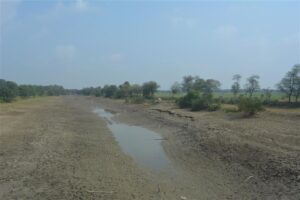
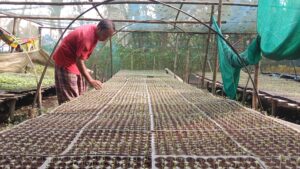
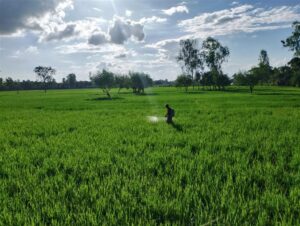
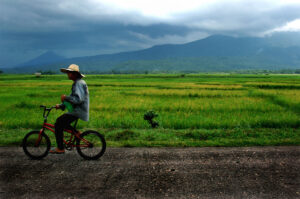
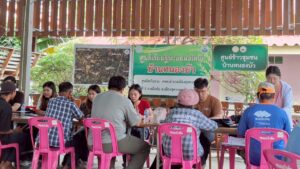
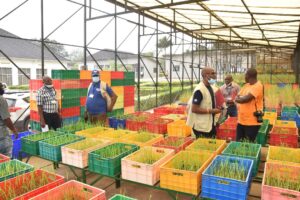
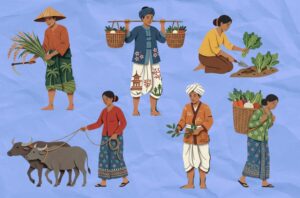
I am a rice farmer from Poongulam Village, Nannilam Taluk, Thiruvarur District, Tamilnadu. I read with great interest the LTCCE project. It defies the principle that monocropping is detrimental to the soil health. As a rice farmer, I am curious to get your clarification on the following.
a) Wouldn’t the soil be depleted of various nutrients that rice takes for its growth?
b) Successive rice crop could host the disease-causing bacteria and continue to host rice pests. How do you address these issues?
c) While harvesting at least a small quantity of grain might spill on the field. When you grow a different rice variety under the irrigated condition, wouldn’t this spilt grain sprout & cause admixture of various rice varieties?
d) After the harvest how long you take to transplant the next crop?
e) Do you always grow short duration varieties with 110-115 days?
f) Lastly, can this kind of perpetual rice growing be practised by farmers like me?